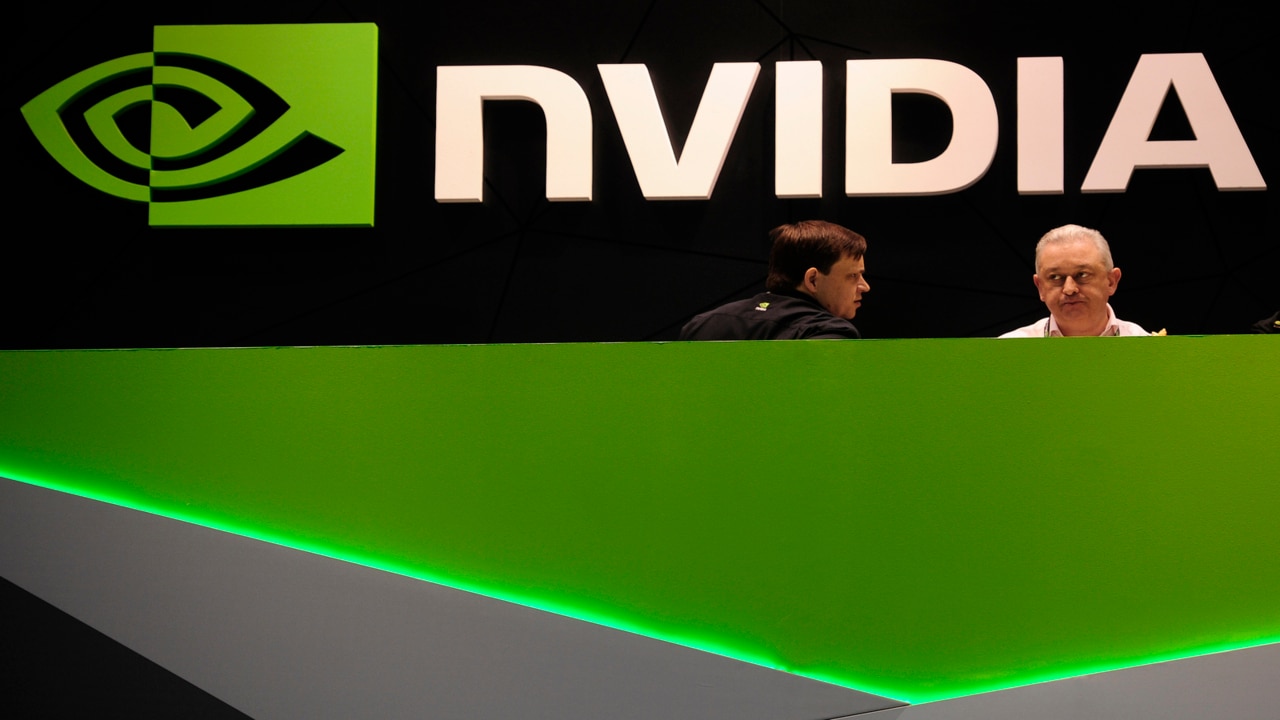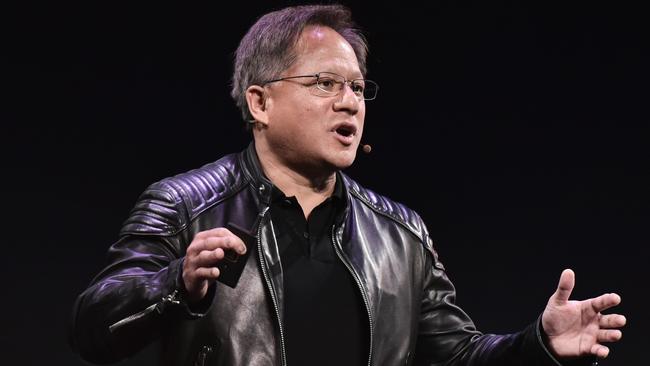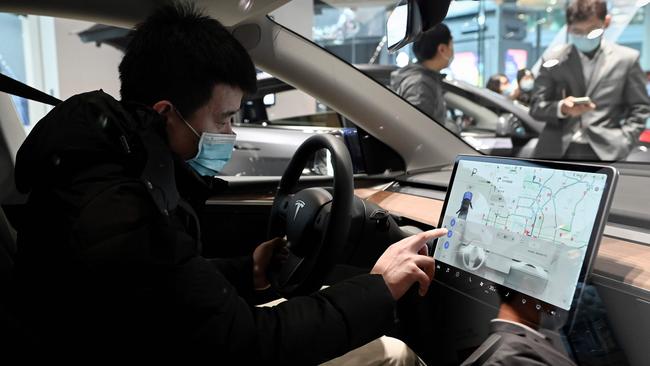How Nvidia became AI superpower and overtook Facebook and Tesla in the race to $1 trillion
A little-known 30-year old tech company has seemingly come from nowhere to overtake tech giants Facebook and Tesla in the race to $1 trillion.

Companies
Don't miss out on the headlines from Companies. Followed categories will be added to My News.
A 30-year old tech company, that you have possibly never heard of, has seemingly come out of nowhere to overtake tech giants Facebook and Tesla in the race to a $1 trillion milestone.
US computer chip-maker Nvidia (pronounced en-vid-eya) saw a remarkable 24.4 per cent surge in its stock prices this week that propelled the company’s valuation to $US963 billion ($1.48 trillion).

That puts it just shy of the exclusive $US1 trillion club, currently only occupied by five companies: Apple, Amazon.com, Microsoft, Alphabet (Google), and Saudi Aramco, the Saudi state oil giant.
Meanwhile, tech giants Facebook and Tesla sit hundreds of billions of dollars behind at $US671.53 billion ($1.03 trillion) and $US612.25 billion ($938 billion), respectively, according to CompaniesMarketCap.com
The massive jump was triggered by the release of Nvidia’s latest quarterly results, which predicted revenue of $US11 billion ($16.8 billion) in the June quarter – a 53 per cent growth that is 50 per cent higher than Wall Street estimates.
That growth was driven by the surge of interest in artificial intelligence and the expected demand for its computer chips that process it.
To some, it may seem like the company has come out of nowhere to almost cruise over the $1 trillion valuation mark. But Nvidia has actually spent the last three decades quietly cementing its position as the tech industry’s go-to chip maker, especially those that support generative AI.

In fact, Nvidia has done more than ride the surging wave of interest in AI platforms like ChatGPT and Alphabet’s Bard, it has propelled the wave – ChatGPT was trained using thousands of Nvidia’s graphic processing units (GPUs), which it invented in 1999, six years after it was founded.
GPUs were invented with the intention to enhance computer image display as part of Nvidia’s trademark purpose to support video game graphics.
Then, in 2006, researchers at Stanford University in California discovered GPUs could be used to accelerate maths operations in a way that regular processing chips could not.
That prompted Nvidia founder and chief executive Jensen Huang to invest in making the company’s GPUs programmable, which helped spark early breakthroughs in modern AI – from the earliest deep fakes to automated image creation and classification.

Now, Nvidia hardware underpins most AI applications today, including Chat GPT, which was trained using 10,000 GPUs clustered together within a Microsoft-powered supercomputer.
In fact, just before ChatGPT was launched, Nvidia released its most powerful – and most expensive – processor yet: the H100.
The chip was billed as “the world’s first computer [chip] designed for generative AI”, the kind of systems that can quickly create human like text, images, and content. Just like the to-be-announced ChatGPT.
But not knowing ChatGPT was around the corner meant many believed Nvidia’s new H100 processor was doomed for failure, especially when sky-high inflation had prompted many companies to cut back on spending.
However since the chatbot’s launch and quick popularity, the world’s leading tech companies and start-ups have been desperately racing to get their hands on the H100, The Australian Financial Review reports.
Elon Musk, who has reportedly bought thousands of Nvidia chips for his new AI start-up X.ai, joked at a Wall Street Journal event that the GPUs were, at present, “considerably harder to get than drugs”.
Nvidia’s Mr Huang said the launch of Open AI’s chatbot was an “aha moment” for his company, which “created an instant demand” for its hardware.
According to its website, Nvidia tech can now be found in the products of more than 35,000 companies – including Tesla, and at least 20 other car brands, which uses it in its touchscreen graphics.

A recent report from CB Insights found Nvidia holds 95 per cent of the GPU market for machine learning.
And although Nvidia’s massive rise has given it a massive target on its back, its people are not concerned about competition.
Nvidia general manager and vice president of accelerated computing Ian Buck told the BBC with everyone needing AI now, “it is up to others to work out where they are going to make a contribution”.
In the same report, the BBC said both Microsoft and Meta (Facebook’s parent company) are developing their own AI chip projects. But Nvidia co-founder Tom Graham said they and others would struggle to catch up.
“There are no alternatives to Nvidia for doing what we do,” Mr Graham said. “It is so far ahead of the curve.”
Originally published as How Nvidia became AI superpower and overtook Facebook and Tesla in the race to $1 trillion




